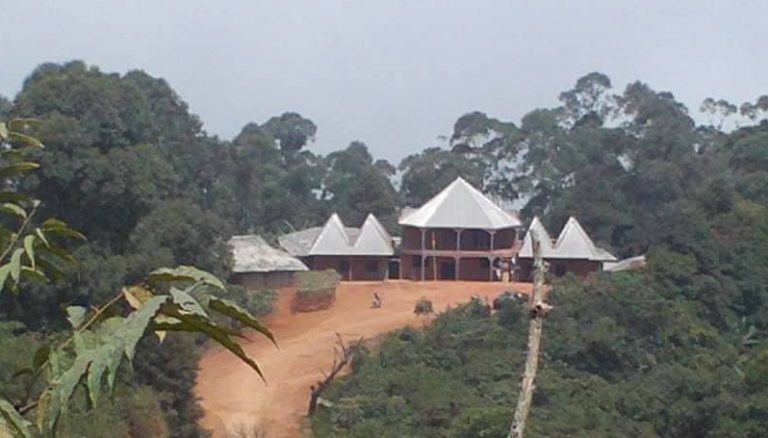THE MOLAH PALACE AND ITS SETTING

The M’muock (Fosimondi) palace and its setting is a structure that stands out prominent. Even the outing of the Fon has a great significance. Formerly, each quarter constructed and repaired its house in the palace. This house could be reserved for the Fon’s wife or for other purpose. The houses are arranged in such a way that the older wives are further while the younger ones are closer to the Fon.
As younger wives come in, the older ones are displaced. The Fon’s residence is located far in the inner core of the palace and fenced out. Situated further towards the palace yard is the hall or ndielemu (lemu) where the Fon receives his guests. Within this hall, positions are arranged in a laid down traditional manner. There is a place reserved for the Fon, his servants (Nchindas or Chafou), his wives, the chiefs, Bekems, other notables and the commoners. At the palace yard is the big drum used in sending messages. The palace yard or jziamei is open and large enough to accommodate the entire village. In order of hierarchy, the Fon’s wives include Ngwenkongho (the first wife), Ngwekem (disputes and reconciliations are settled in her house) and the other wives in order of marriage.
The Queen mothers campaign for wives for the Fon while he himself may also have a ‘long eye’ on women. Once he points at one, a bangle is put on her hand to signify that she is now a ‘forbidden ground’. Other well wishers also campaign for wives for the Fon while some parents may volunteer to send their daughters to the palace and some girls may also opt to get married to the Fon. This is because being a Fon’s wife carries a lot of prestige as well as being an in-law of the palace. Once a woman arrives the palace for marriage, two bangles are worn on her left ankle and every evening, all the Fon’s wives and neighbours come around to celebrate in the “bangle or kwang” dance. The woman is rubbed with calm wood. Formerly, the Fon never paid bride price but nowadays, he too is obliged to.
A woman who is forcefully brought to the palace against her will by her parents may be put on some confinement until she gives in. If she runs away, then she is banished from the village. The Fon’s wives took turns in providing food for the palace as well as tidying him up (or at least cleaning his legs before he went to bed).
The whole village provided food for the palace. Sometimes, they went out, cleared and cultivated the Fon’s farm (lefunge) and harvested to feed the inhabitants of the palace.
Within the palace were male servants called nchinda or bechafou. They assisted in receiving, directing and serving guests. They also carried out errands and accompanied the Fon for outings.
The Fon’s outings are special. He doesn’t go out of the palace alone and if it is for a funeral or death celebration, he is accompanied by the palace servants, princes and some notables. His movement is announced by the sounding of a gong in a special rhythm. Any passers-by step out of the road, in special respect, to allow him pass. Once the convoy is closed to the place, all other males who are already there come out and surround him (covered with a large umbrella) so as to accompany him to his seat while singing (if it is a death celebration) the kezah song. This is followed by dancing until he is seated. When he is seated, people go closer to him individually or in groups to greet him by clapping their hands doubly thrice.
By his side is Mefou (the Queen), then a little bit far off are the servants while his wives sit a little bit further. His seat is covered with tiger skin and the background surrounded with durable traditional fibre called njilekeu. On the left of the yard are the chiefs, Bekems and other males, each group occupying its due position, and on the right are the women. When he has to leave, this is announced by the sound of a gong. Everybody stands up while others see him off.
TRADITIONAL ADMINISTRATION IN M’MUOCK

The traditional council assists the Fon in the administration of the village. They settle disputes, judge cases, advise the Fon and carry out some important decisions concerning the village and its structures. They also apportion tasks to individuals as well as quarters. It is headed by a chairman, an assistant, secretary and members. The Fon is an ex officio member. They sit once a week in the palace or whenever the need arises. They coordinate the reception of guests in the village.